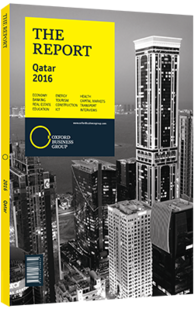Qatar examines ways to meet the needs of its youth
One of the most important issues currently facing the Middle East is the changing composition of its demographic structure. A massive cohort of young people – known as a youth bulge – is challenging policy makers, with youth policy affecting security, education, the labour market and welfare programmes, among other areas. Given the relative stability and wealth of the GCC states, this is an issue that is not often associated with the region. However, handling a vast and growing young population is just as much of a challenge in the Gulf as elsewhere.
Youthful MENA
The situation in the MENA region as a whole is stark. It has the largest youth population in the world, with more than half of residents under the age of 25. This puts a heavy burden on regional governments. MENA also has the world’s highest youth unemployment rate, standing at 27.2% in the Middle East and 29% in North Africa. This is partly the result of an inadequate labour market to which 2.8m young job seekers are added every year. Only 19% of working-age people in MENA, for example, are employed in the formal sector. The countries of the GCC are at varying stages of their demographic transitions and are experiencing diverging fertility and population growth rates. The youth bulge – the percentage of the population under the age of 25 – ranges from 25% in Qatar to 50% in Oman. In the UAE it stands at 34%, while it is 35% in Bahrain, 40% in Kuwait and 46% in Saudi Arabia.
This substantial youth population provides a challenge for Gulf governments. The World Economic Forum has warned that the region as a whole is facing a critical period in which the current demographic structure can either be turned into a “youth dividend” or a “youth liability”. This will depend on GCC policy makers’ ability to fulfil young people’s aspirations.
Unemployment
So far GCC governments have had difficulties turning this potential into an actual dividend. In the last few years, youth unemployment rates have been a significant issue. Although the region has experienced strong economic growth and job creation, youth unemployment rates were more than double that of the overall unemployment rate in 2013, according to the most recent figures available from the World Bank.
For example, in Saudi Arabia, the current overall unemployment rate was 5.7%, while the youth unemployment rate was 28.7%. In the UAE, the figures were 3.8% and 9.9%, respectively. Bahrain and Oman both had youth unemployment rates over 20%, while in Kuwait it was 19.6%. Qatar was the only country in the Gulf region that had the situation completely under control, with an overall unemployment rate of 0.5% and a youth unemployment rate of just 1.5%.
Moving forward, the main avenues for reform lie with the education system and the labour market. Overall, more than 80% of private sector jobs across the region are filled by low-skilled foreigners. According to IMF forecasts, approximately 1.2m-1.6m nationals will enter the labour market by 2019. However, in the same time period, only 600,000 new private sector jobs will be created for nationals.
Initiatives & Reforms
Several countries in the region have tried to address these challenges. Saudi Arabia uses its Human Resource Development Fund to address barriers to employment and finance programmes to develop youth entrepreneurship and job training. In the UAE, Abu Dhabi has also invested heavily in improving education in a bid to produce graduates well suited for private sector jobs.
Qatar’s initiatives are looking at ways to improve the labour market through business creation. One approach is to encourage the growth of small and medium-sized enterprises and entrepreneurial activity, vital channels for young people to enter the job market. In order to achieve this Qatar is looking at ways to improve access to finance and easing the procedures for starting a business in the country.
You have reached the limit of premium articles you can view for free.
Choose from the options below to purchase print or digital editions of our Reports. You can also purchase a website subscription giving you unlimited access to all of our Reports online for 12 months.
If you have already purchased this Report or have a website subscription, please login to continue.

